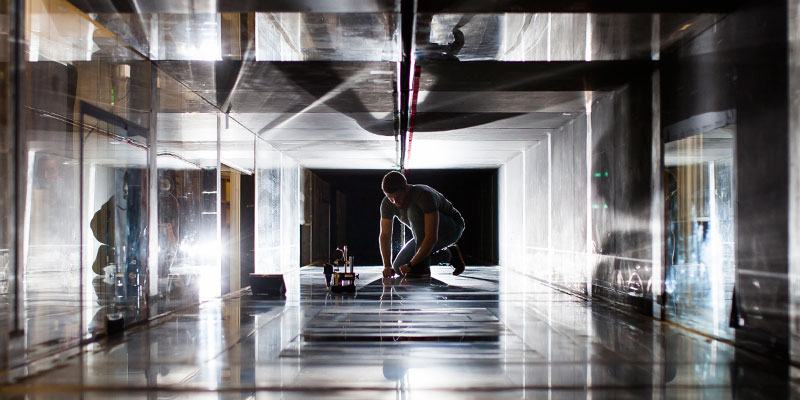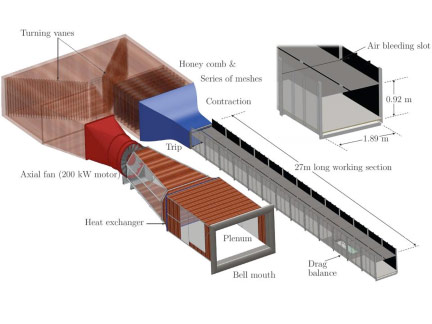
The Walter Bassett Aerodynamics laboratory is a world-leading center for experimental research on turbulent boundary layers. It contains a number of unique facilities, including the High Reynolds Number Boundary Layer Wind Tunnel (HRNBLWT) and fully turbulent pipe and channel flow facilities. It also houses a large closed return tunnel for model testing and a unique rotating wind-tunnel for investigating boundary layers with additional body forces.
The laboratory is fully equipped to the highest standards, with state-of-the art measurement suites including over 20 channels of hot-wire anemometry, full sensor manufacturing capability; 3 complete multi-camera high-resolution PIV systems; multi-channel pressure measurement and high-speed data acquisition systems. The lab also has a light-use CNC machine for in-house manufacture of models for aerodynamic testing.
HRNBLWT (High Reynolds Number Boundary Layer Wind Tunnel)

The center piece of the lab is the High Reynolds Number Boundary Layer Wind Tunnel; one of the largest purpose built boundary layer facilities in the world.
This unique facility enables us to probe turbulent boundary layers at very high Reynolds numbers and with unprecedented measurement resolution. A segment on ABC’s Catalyst show highlighted research from the Fluids Mechanics Research Laboratory and featured the High Reynolds Number Boundary Layer Wind Tunnel.
Key parameters
Open return, temperature controlled, low-speed boundary layer wind tunnel, with computer controlled 2 axis precision measurement sting. The turbulent boundary layer develops over the bottom wall of the working section, and the pressure gradient is controlled via a movable bled top wall. The working section incorporates a large air-bearing drag balance for determining skin friction.
| Motor: | 200 kW |
|---|---|
| Working section (w x h x l): | 1.89m × 0.92m × 27m |
| Maximum velocity: | 45 m/s |
| Boundary layer thickness at 21m: | 0.32 m |
| Max Reynolds number: | Rex = 6.3 ×107 Reτ = 3.2 ×104 |